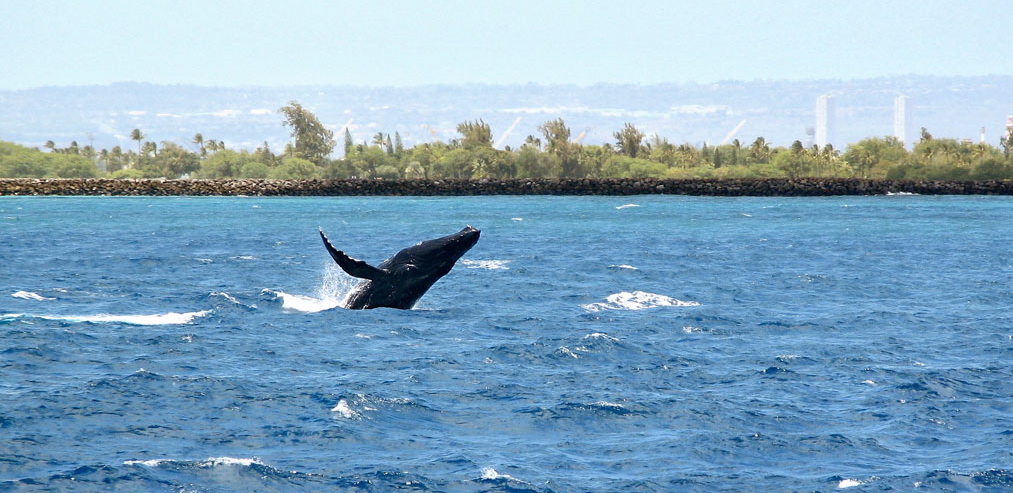Published in the Ocean Watch column, Honolulu Star-Advertiser © Susan Scott
February 23, 2007
When it comes to organizing outings, my friend Howard is a superhero. Last weekend, he gathered 16 friends, all longtime Hawaii residents, to go whale watching on a Honolulu tour boat.
None of us had visitors, there were no birthdays among us and no one had anything special to celebrate. It was just time, Howard thought, for us to get out on the water and appreciate one of our city’s finest gifts of nature: humpback whales.
As you might expect when a bunch of friends meet on a sunny Saturday in Hawaii to look for whales, we enjoyed ourselves. We didn’t see many whales, but caught the blow, hump and fluke of one, and that was enough. The individual represented its species well and generated lots of whale talk.
The subject that produced the liveliest discussion was (of course) about sex: When and where do these whales mate? my friends wanted to know. I didn’t know the answer, but I didn’t feel too bad about that. Humpback whale researchers don’t know, either. No one has seen humpback whales mating.
“But I’ve heard stories about male whales … um, exposing themselves,” a friend said.
True. Rambunctious males of some species, such as orcas, are famous for rolling at the water’s surface, their erect penises flopping around during the turn. Whalers once referred to these and other whales’ 3- to 8-foot-long penises as pink sea snakes. Male humpback whales, however, keep their pink sea snakes to themselves.
Researchers have clues that our humpbacks mate here in Hawaii’s waters, but no one knows for sure. If they do, they do it either deep, offshore or at a distance from pesky snorkelers and divers.
Humpbacks’ courtship behaviors, however, are out there for everyone to hear and see. Males sing long, complex songs that begin in their northern feeding grounds. In Glacier Bay, Alaska, researchers recorded male humpbacks songs beginning in August and stopping in November, presumably because the whales left for Hawaii. Here, the songs go on all winter long.
While courting, male humpback whales congregate around a female and then compete aggressively for her favors. Male whales lunge, tail-slash, head-butt, charge and block one another. These animals don’t fight to the death, but since they’re 50 feet long and weigh 100,000 pounds, the pushing and shoving can get pretty rough.
Humpback whales are a highly migratory species, swimming worldwide in all oceans. Most feed in cold waters, follow regular migration routes and breed in warm waters.
The only humpback whale population that stays year-round in tropical waters is in the Arabian Sea. The whales there don’t migrate because they don’t have to. Winds and currents in the Arabian Sea create waters rich enough in shrimp and small fish to feed the whales.
Since they prefer coastal waters and islands, humpback whales are among the most widely studied whales in the world. Even so, whether it’s due to timing, location or wariness, researchers have yet to see them mate.
To spend a day whale watching with friends, Howard chose a day, sent e-mails, made calls, found a tour boat and organized our tickets. Thank you, Howard. We appreciate you as well as the whales.
